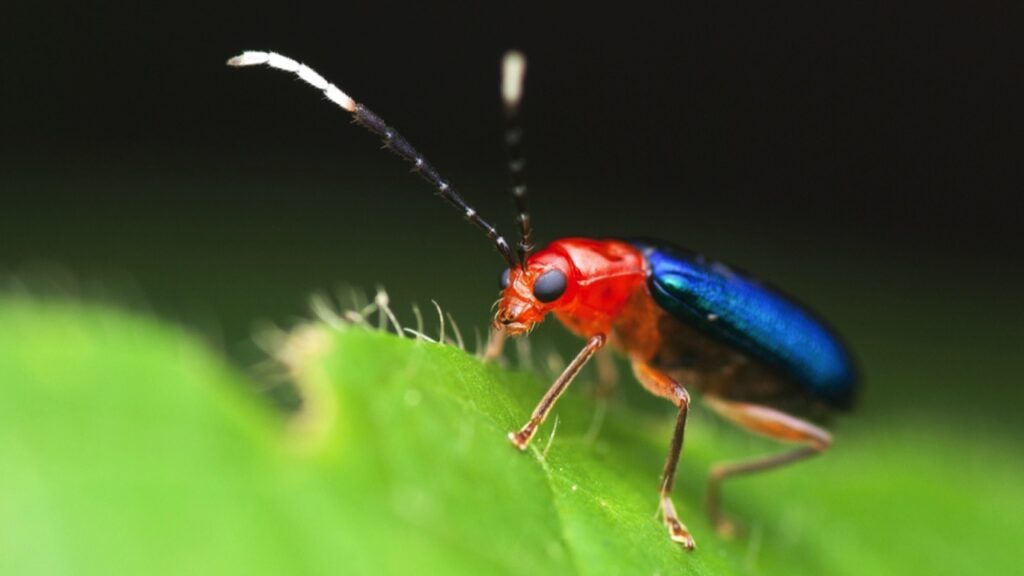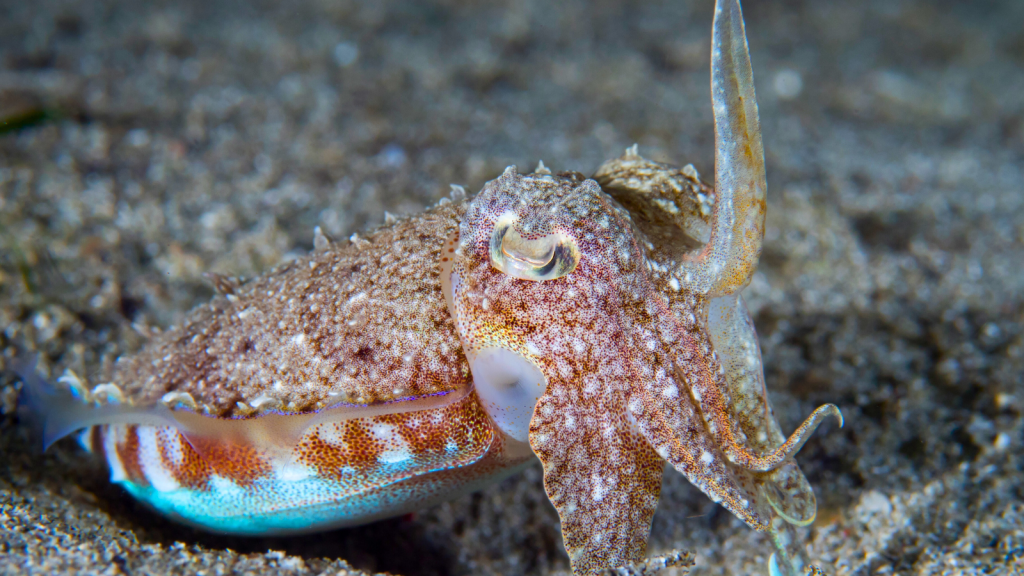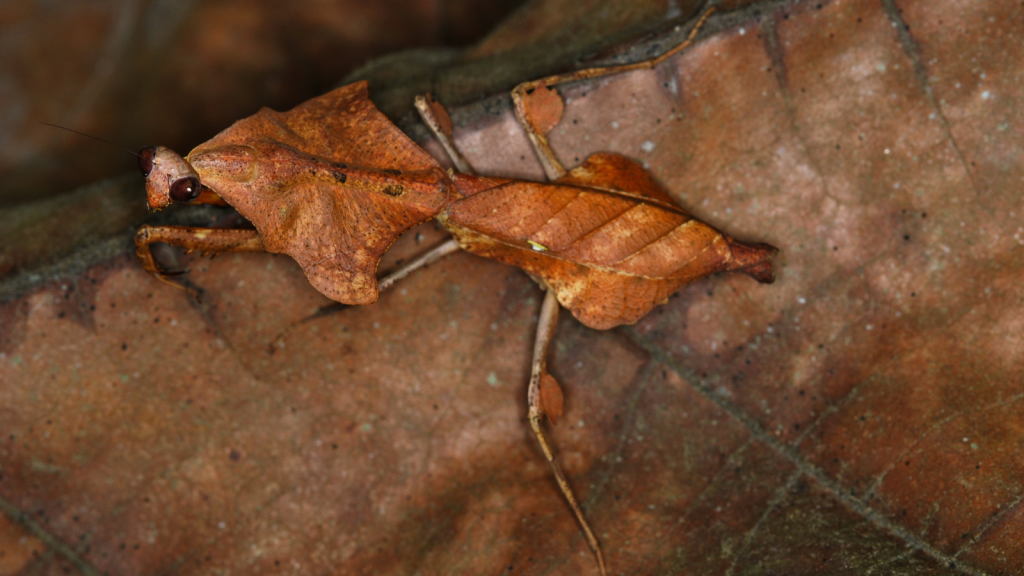Nature is full of surprises, and the animal kingdom is no exception. While many creatures rely on brute strength or speed to survive, some have developed clever tricks to outwit their hunters. These crafty critters use everything from camouflage to chemical warfare to stay one step ahead of danger. Their ingenious tactics show just how resourceful wildlife can be when faced with threats. Let’s explore 15 amazing animals that prove brains often trump brawn in the wild.
Mimic Octopus

The mimic octopus is a master of disguise. This clever cephalopod can change its colour and shape to imitate over 15 different sea creatures. It might transform into a venomous lionfish to scare off predators or disguise itself as a harmless flounder to sneak past danger. This remarkable ability to shape-shift makes the mimic octopus a true maestro of marine mimicry. Found in the warm waters of the Indo-Pacific, this intelligent invertebrate can even mimic the movements of its chosen disguise, making its impersonations even more convincing.
Bombardier Beetle

This tiny insect packs a powerful punch. When threatened, the bombardier beetle mixes chemicals in its abdomen to create a boiling, toxic spray. It can aim this scalding jet with pinpoint accuracy, firing it at predators in rapid bursts. This chemical defence is so effective that few animals dare to mess with the bombardier beetle. The spray can reach temperatures of up to 100°C (212°F), making it one of the hottest chemical defences in nature.
Killdeer

The killdeer employs a cunning strategy to protect its young. When a predator approaches its nest, this clever bird pretends to have a broken wing. It flops about dramatically, luring the threat away from its eggs or chicks. Once the predator is a safe distance away, the killdeer miraculously ‘recovers’ and flies off, leaving the confused hunter empty-handed. This behaviour, known as the “broken-wing display,” is so convincing that it has fooled many human observers as well.
Hagfish

The hagfish has a truly disgusting way of deterring predators. When attacked, it releases copious amounts of slime from special glands along its body. This gooey substance expands in water, quickly clogging the gills and mouth of any would-be attacker. The slime is so effective that it can suffocate large fish in minutes, allowing the hagfish to slither away unharmed. A single hagfish can produce enough slime to turn a 20-litre bucket of water into gel in a matter of moments.
Peacock Mantis Shrimp

Don’t be fooled by its beautiful colours – the peacock mantis shrimp is a fierce predator in its own right. However, it has a clever trick for avoiding larger threats. This crustacean can rapidly change colour, becoming nearly invisible against its coral reef home. Its lightning-fast colour changes make it a master of underwater hide-and-seek. The peacock mantis shrimp also possesses incredibly complex eyes with 16 colour receptors (compared to humans’ three), allowing it to detect and respond to threats with astonishing speed.
Cuttlefish

Cuttlefish are the chameleons of the sea. These intelligent cephalopods can instantly change their skin colour and texture to blend in with their surroundings. They can even create moving patterns on their skin to hypnotise prey or confuse predators. This remarkable camouflage ability makes cuttlefish nearly impossible to spot in their natural habitat. Their skin contains millions of specialised cells called chromatophores, which they can control individually to create an almost limitless array of patterns and textures.
Hognose Snake

When faced with danger, the hognose snake puts on a dramatic performance. It flattens its head, hisses loudly, and even pretends to strike. If this doesn’t work, it takes its act to the next level by rolling over and playing dead, complete with lolling tongue and foul smell. This Oscar-worthy display is usually enough to convince predators to leave it alone. The hognose snake is so committed to its act that it will even remain ‘dead’ if picked up and turned right-side up, immediately flopping back onto its back to maintain the illusion.
Lyrebird

The lyrebird is nature’s ultimate mimic. This Australian bird can perfectly imitate the calls of other birds, as well as man-made sounds like car alarms and chainsaws. By copying the calls of predators, the lyrebird can scare off potential threats. Its incredible vocal range also helps it blend into its environment, making it harder for hunters to locate. Male lyrebirds use their extraordinary mimicry skills during courtship, with the most skilled mimics often being the most attractive to females.
Decorator Crab

The decorator crab takes a hands-on approach to camouflage. It collects bits of seaweed, sponges, and other marine life, then attaches them to its shell using special hooked bristles. This DIY disguise helps the crab blend in with its surroundings, making it nearly invisible to predators. Some decorator crabs even use stinging anemones for added protection. The crab’s disguise is so effective that it often changes its decorations to match new environments as it moves around the ocean floor.
Pufferfish

When threatened, the pufferfish employs a dramatic defence strategy. It rapidly takes in water or air, swelling up to several times its normal size. This transformation turns the pufferfish into a spiky, balloon-like creature that’s difficult for predators to swallow. Many pufferfish species are also highly toxic, adding an extra layer of protection. Some pufferfish can inflate themselves so quickly that they can double their size in less than a second, creating a formidable defence in the blink of an eye.
Malaysian Leaf Insect

The Malaysian leaf insect is a master of disguise. Its body is shaped exactly like a leaf, complete with veins and even fake bite marks. These insects can change colour to match the leaves around them, making them nearly impossible to spot. They even sway gently to mimic leaves moving in the breeze, fooling even the keenest-eyed predators. Female Malaysian leaf insects are particularly convincing in their disguise, often being mistaken for real leaves even by other leaf insects.
Horned Lizard

The horned lizard has a truly bizarre defence mechanism. When cornered, it can increase the pressure in certain blood vessels around its eyes. This causes a thin stream of blood to shoot from its eye, sometimes up to a metre away. This startling spray often surprises and confuses predators, giving the lizard a chance to escape. The blood also contains a foul-tasting chemical that can deter canine and feline predators, making this defence both visually shocking and chemically repellent.
Anglerfish

The deep-sea anglerfish uses a clever bait-and-switch tactic. It has a long, modified fin ray on its head that acts like a fishing rod. The tip of this ‘rod’ glows in the dark, thanks to bioluminescent bacteria. The anglerfish dangles this lure in front of its mouth, attracting curious prey. When a victim gets too close, the anglerfish quickly snaps it up. Some species of anglerfish can even change the colour of their lure to attract different types of prey, making them even more effective hunters in the dark depths of the ocean.
Stick Insect

Stick insects are masters of camouflage. Their long, thin bodies and brown or green colouring make them look just like twigs or leaves. Some species can even regrow lost limbs, helping them maintain their perfect disguise. When threatened, stick insects often sway back and forth, mimicking a branch moving in the wind to further fool predators. Certain stick insect species have evolved leaf-like flanges on their legs, making their camouflage even more convincing when they tuck their limbs close to their body.
Opossum

The opossum is famous for ‘playing possum’ when threatened. It falls onto its side, becomes stiff, closes its eyes, and even produces a foul smell. This act is so convincing that many predators assume the opossum is dead or diseased. The opossum can remain in this state for hours, waiting until the coast is clear before ‘coming back to life’ and scurrying away. Interestingly, this behaviour is involuntary and triggered by extreme fear, similar to fainting in humans, making it a genuine physiological response rather than a conscious act.
Becky is a fervent wildlife enthusiast and pet care expert with a diploma in canine nutrition. Her love for animals stretches beyond the domestic, embracing the wild tapestry of global fauna. With over a decade of experience in animal welfare, Becky lends her expertise to OutlandishOwl through insightful articles, captivating wildlife information, and invaluable guidance on pet nutrition. Her work embodies a deep commitment to understanding the intricate lives of animals and a passion for educating others on sustaining natural habitats. Becky's hands-on conservation efforts and her knack for translating complex dietary science into practical pet feeding tips make her an indispensable voice for creatures great and small.




